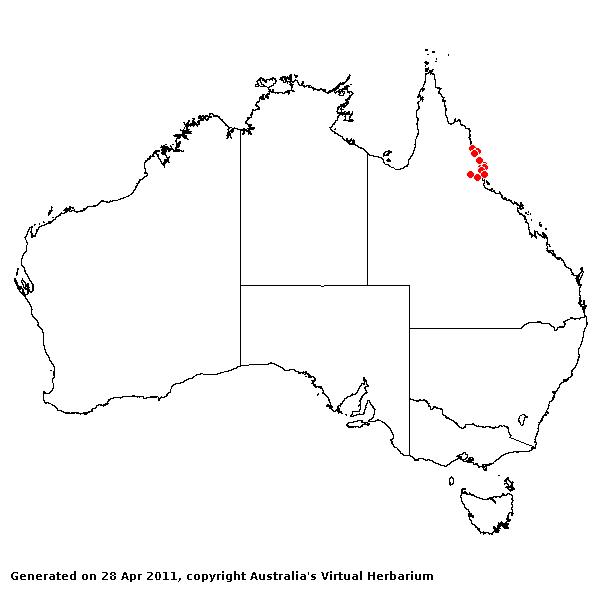Ichnanthus pallens (Sw.) Munro ex Benth.
Flora Hongkongensis 414. 1861.
Classification. (GPWG 2001) : Subfamily
Panicoideae. Paniceae.
Basionym and/or
Replacement Name: Panicum pallens
Sw., Prodr. 23 (1788).
Type of Basionym or
Protologue Information: LT: O.P. Swartz s.n., Jamaica
(M; ILT: BM, G, S, US-2489445 (fragm. ex M), US-2489446 (fragm. ex S)). LT
designated by Stieber, Syst. Bot. 12: 203 (1987).
Recent synonyms:
I. vicinus.
Key references
(books and floras): [1969] E.E.Henty, Manual Grasses New Guinea
(111 as I. vicinus), [2002] D.Sharp & B.K.Simon, AusGrass,
Grasses of Australia.
Habit.
Perennial. Stolons present. Culms prostrate, 10–60 cm tall. Ligule a fringed
membrane, a ciliolate membrane, 0.9–1.1 mm long. Leaf-blades lanceolate, 2–11
cm long, 5–25 mm wide.
Inflorescence.
Inflorescence compound, a panicle of racemes. Panicle oblong, 5–15 cm long,
contracted about primary branches and contracted about secondary branches.
Racemes 3–7.5 cm long.
Spikelets.
Spikelets pedicelled, 2 in the cluster. Fertile spikelets 2-flowered, the lower
floret barren (rarely male), the upper fertile, comprising 1 basal sterile
florets, comprising 1 fertile floret(s), without rachilla extension,
lanceolate, laterally compressed, 4–5.6 mm long. Rhachilla internodes elongated
below proximal fertile floret.
Glumes. Glumes
similar, thinner than fertile lemma. Lower glume lanceolate, herbaceous,
keeled, 1-keeled, 5 -nerved. Upper glume elliptic, 3.8–4.9 mm long, herbaceous,
keeled, 1-keeled, 5–7 -nerved. Florets. Basal sterile florets 1, barren,
with palea. Lemma of lower sterile floret 100 % of length of spikelet,
1-keeled, 5–7 -nerved.
Fertile lemma 2–2.8 mm
long, without keel. Lemma apex muticous. Lodicules present. Anthers 3.
Continental
Distribution: Africa, Temperate Asia, Tropical Asia, Australasia, North
America, and South America.
Australian
Distribution: Queensland.
Queensland:
Cook, North Kennedy.
Notes.
A member of the section Foveolatus which is characterized by two small
areas of sclerified tissue at the base of the upper lemma, a curved stipe and
the presence of rosette clusters at the palea apex.
Native to the Old
World, it is a trailing forest grass which is widely distributed in the tropics
of Asia. In tropical and subtropical rain
forests. Occasionally collected in the tropical rainforests of Qld. Flowers
Oct.-May.





